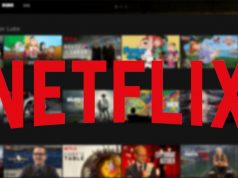

“As entertainment shifts online, consumers are discovering that they have more control over their viewing experiences than ever before. What they’re looking for today is choice, quality and greater flexibility, and these demands are driving new trends that are shaping the future of entertainment.” said Chris Jaffe, Vice President of Product Innovation, Netflix.
Jaffe added, “We are moving into an era of multi-device connectivity and contextual entertainment.”


With the pivot towards contextual entertainment, streaming on TV devices has grown, with 56% of Netflix viewing hours in Malaysia and 61% across Asia Pacific through connected TVs. Smart TVs lead the charge as the most popular connected TV device. This is followed by media streaming devices such as Apple TVs, Rokus or Chromecasts and game consoles like Xboxes and Playstations. Even the evolving set top box has become a popular choice for Netflix members in the region.
Despite increasing mobility, the TV remains the enduring centerpiece of the consumer’s entertainment experience with the shift from the linear to connected world. Consumers today are now discovering a new world of entertainment in their homes on connected TVs.
“People have always enjoyed watching TV and this won’t change anytime soon. The beauty of connected TVs is that they’re able to exploit the best part of the conventional linear TV experience, while leveraging all of the benefits of connected technology. Consumers can now enjoy big screen time at home that is personalized to their unique tastes and preferences, on-demand, immersive and interactive. As consumers discover this with Netflix, the more they love their connected TV experience.” said Jaffe.
Across the Asia Pacific region, Netflix finds that while majority of membership signups are through mobile devices and laptops, consumers move on to discover the connected TV experience. Within six months of subscription, 55% of accounts’ primary viewing device in Malaysia while 60% in Asia Pacific become connected TVs. These members across the region are also spending twice as long watching on their connected TVs as they do on their mobile devices. This behaviour points to the growing demand for connected TV viewing and relatedly, sales of Smart TVs in Asia Pacific have increased 40% over the last year.[1] Smart TV is also increasing its presence in Malaysia’s living room as evident from the highest up-front digital expenditure.[2]
[1]http://www.gfk.com/insights/press-release/connected-consumers-driving-growth-of-smart-devices-in-asia-pacific/
[2]http://www.ey.com/Publication/vwLUAssets/ey-decoding-the-malaysian-digital-dna/$FILE/ey-decoding-the-malaysian-digital-dna.pdf
Innovation in TV technology is also driving audio-visual entertainment experiences right in consumers’ homes. Sales of Ultra HD 4K TV in Asia Pacific region surged 103% over the past 12 months[1] in 2017, and Malaysia specifically, saw a 27% increase in the first quarter of 2016.[2] Consumers can now also access top-quality entertainment, not just on full-fledged home theatre systems, but on sound bars and headsets.
[1] http://www.gfk.com/insights/press-release/connected-consumers-driving-growth-of-smart-devices-in-asia-pacific/
[2]http://www.gfk.com/insights/press-release/uhd-tv-market-size-in-apac-more-than-doubled-in-the-last-year/
Jaffe also added, “These audio-video innovations come at a time when there is a growing library of high-quality content available for streaming. Netflix has endless hours of Ultra HD 4K and High Dynamic Range (HDR) content; and more than half of our catalogue already supports 5.1 surround sound. We have also just announced our support for Dolby Atmos three-dimensional sound.”
Titles on Netflix that support Dolby Atmos include Okja, BLAME!, Death Note. ver the next few months, the highly-anticipated Stranger Things Season 2, Marvel’s The Punisher and Bright (starring Will Smith) will also be joining Netflix’s library of exceptional audio-visual quality to make for a delightful home streaming experience.
Netflix is the world’s leading internet entertainment service with 109 million members in over 190 countries enjoying more than 125 million hours of TV shows and movies per day, including original series, documentaries and feature films. Members can watch as much as they want, anytime, anywhere, on nearly any internet-connected screen. Members can play, pause and resume watching, all without commercials or commitments.
-Bernama










